#Sleepy Lagoon murder
Explore tagged Tumblr posts
Text

#Sleepy Lagoon murder#Zoot Suit riots#1940s#historical#Mexican American#Orson Welles#Joseph Cotten#Canada Lee#Rita Hayworth
0 notes
Text
The Zoot Suit Riots, a series of violent confrontations between Latino and Black youths and members of the U.S. military, began on June 3, 1943, in Los Angeles, California.
Subscriber Content Add content here that will only be visible to your subscribers. Payment Image: Victims of the Zoot Suit Riots, where groups of servicemen scoured the streets in Los Angeles looking for and attacking individuals wearing zoot suits (June 1943). The servicemen blamed the Mexican American pachucos for numerous unprovoked assaults on their colleagues. (Public Domain) On this day…

View On WordPress
#1940s#African Americans#California#History Daily#Latinos#Los Angeles#Riots#Sleepy Lagoon Murder Trial#US Servicemen#Zoot Suit Riots
2 notes
·
View notes
Text
a list of some autumnal movies/series 🍂
i am nothing if not an organised little goblin who can not stop themself from making a good list. this is just in case you want something with that fall vibe but can't think of any. just close your eyes and point somewhere on this little list, or even put the numbers in a generator and go with whatever the result is ♡
winter | spring | summer
🥧 ‧₊˚ ⋅ movies ⋅˚₊‧
nosferatu (1922)
sabrina (1954)
the creature from the black lagoon (1954)
psycho (1960)
rosemary’s baby (1968)
the rocky horror picture show (1975)
halloween franchise (1978-)
friday the 13th franchise (1980-)
an american werewolf in london (1981)
dark crystal (1982)
a nightmare on elm street (1984)
ghostbusters (1984-)
ronja rövardotter (1984)
clue (1985)
princess bride (1987)
the witches of eastwick (1987)
elvira mistress of the dark (1988)
dead poets society (1989)
when harry met sally (1989)
ghost (1990)
the witches (1990)
death becomes her (1992)
hocus pocus (1993)
addams family values (1993)
interview with a vampie (1994)
the craft (1996)
the first wifes club (1996)
the scream franchise (1996-)
halloweentown (1998)
practical magic (1998)
you’ve got mail (1998)
the blair witch project (1999)
sleepy hollow (1999)
chocolat (2000)
amelie (2001)
the lord of the rings franchise (2001-2003)
scooby doo (2002)
school of rock (2003)
mona lisa smile (2003)
peter pan (2003)
pirates of the caribbean franchise (2003-2017)
north & south (2004)
pride and prejudice (2005)
the descent (2005)
just like heaven (2005)
the devil wears prada (2006)
the lake house (2006)
penelope (2006)
el orfanato (2007)
juno (2007)
ratatouille (2007)
bridge to terabithia (2007)
the edge of love (2008)
twilight (2008)
the curious case of benjamin button (2008)
julie & julia (2009)
jennifer’s body (2009)
dorian gray (2009)
coraline (2009)
true grit (2010)
the cabin in the woods (2011)
jane eyre (2011)
wuthering heights (2011)
perks of being a wallflower (2012)
the odd life of timothy green (2012)
hotel transylvania (2012-)
the conjuring franchise (2013-)
what we do in the shadows (2014)
the riot club (2014)
as above so below (2014)
john wick (2014-)
the age of adaline (2015)
the witch (2015)
far from the madding crowd (2015)
the edge of seventeen (2016)
paterson (2016)
20th century woman (2016)
the love witch (2016)
mary shelly (2017)
murder on the orient express (2017)
get out (2017)
a quiet place (2018 + 2020)
the guernsey literary and potato peel pie society (2018)
on the basis of sex (2018)
knives out (2019)
ready or not (2019)
the lighthouse (2019)
little women (2019)
the gentlemen (2019)
emma (2020)
ammonite (2020)
the dig (2021)
fear street trilogy (2021)
good luck to you, leo grande (2022)
the batman (2022)
fresh (2022)
bodies bodies bodies (2022)
mr malcom's list (2022)
totally killer (2023)
slay (2024)
🧦 ‧₊˚ ⋅ series ⋅˚₊‧
moomin (1990-1992)
twin peaks (1990-1991)
x files (1993-2018)
buffy the vampire slayer (1997-2003)
gilmore girls (2000-2007)
supernatural (2005-2020)
vampire diaries (2009-2017) / the originals (2013-2018) / legacies (2018-2022)
downton abbey (2010-2015)
the walking dead (2010-2022)
once upon a time (2011-2018)
american horror story (2011-)
teen wolf (2011-2017)
peaky blinders (2013-2022)
outlander (2014-)
how to get away with murder (2014-2020)
the magicians (2015-2020)
izombie (2015-2019)
poldark (2015-2019)
critical role (2015-)
stranger things (2016-)
ghost files / buzzfeed unsolved (2016-)
lucifer (2016-2021)
shadowhunters (2016-2019)
anne with an e (2017-2019)
the good fight (2017-2022)
riverdale (2017-2023)
manifest (2018-2023)
killing eve (2018-2022)
succession (2018-2023)
you (2018-)
a discovery of witches (2018-2022)
the chilling adventures of sabrina (2018-2020)
dickinson (2019-2021)
virgin river (2019-)
carnival row (2019-2023)
the witcher (2019-)
the umbrella academy (2019-2024)
sanditon (2019-2023)
good omens (2019-2025)
the haunting of bly manor (2020)
i’ll be gone in the dark (2020)
queens gambit (2020)
the great (2020-2023)
shadow and bone (2021-2023)
the nevers (2021-2023)
wednesday (2022-)
interview with the vampire (2022-)
vikings valhalla (2022-2024)
lessons in chemistry (2023)
my lady jane (2024-)
#♡ ♡ ♡#lea speaks#• comfort if you need it •#movies#comfort movies#movie recommendation#autumn aesthetic#fall aesthetic#halloween aesthetic#studyblr#cottagecore#dark academia#autumn#autumn vibes#fall#fall vibes#cozycore#cosycore#hygge#witch aesthetic
975 notes
·
View notes
Text
hi, I’m phie ! I create and consume yumyumyum!
she/they, sapphic, sleepy
I’ve mostly made art for batfam, bsd, ninjago, murder drones, jjk, and ocs but I love so many things I could never stick to just a few. If you have any asks (for me or characters ig!) or suggestions feel free<3 I’m always looking for inspiration to force me to draw
Here are some other media I like<3
*
Over the garden wall, arcane, madoka magica, nana, sally face, dungeon meshi, kny, dead boy detectives, gravity falls, rottmnt, chainsaw man, banana fish, sk8 the infinity, the owl house, spiderman, marvel in general if mostly spiderman tho, dc in general too, cowboy bebop, black lagoon, ohhc, supernatural, black butler, nge, inside job, saiki k, and ofc lalaloopsie<3
looking through those I am growing concerned
anyways hope we all end up being nice to each other and politely violently fixate on media<3
#artists on tumblr#pinned post#intro post#art#drawing#digital art#digital drawing#lgbtqia#she/they#fanart#fanartist#oc artist#bsd#jjk#kny#murder drones#nana#sally face#banana fish#lalaloopsy#gravity falls#ninjago#black butler#black lagoon#nge#the disastrous life of saiki k.#batman#batfam#spider man#marvel
22 notes
·
View notes
Text

1. driftwood | bonfire | pyromania
2. sweater weather | a dark and stormy night| 10 days of rain
3. centaur | Sleepy Hollow, NY | bakotsu
4. Halloween virgin | Halloween veteran | Queen of Halloween
5. hidden lagoon | The Pettenedda (well monster) | a bunyip in the billabong
6. dungeon | hidden away in Hydra’s sub-basement | subterranean terror
7. supernatural harbinger (Vardøger) | bilocation (doppelgänger) | the Gothic double (Jekyll v. Hyde/Banner v. Hulk)
8. the Hanging Wood | Witches Castle | the Black Forest
9. Chinese Lantern | vampire fruit | Ghost Gum
10. sheet ghost | haunt | ghost POV
11. phobia | fear made flesh | [insert your personal fear here]
12. alienation | Hill of Crosses | “Waltzing Matilda”
13. mutation | sentient Hydra experiment | interviewing a monster
14. Sasquatch | Wild Man of the Woods | Silvanus (similar to a satyr or faun)
15. tarot cards | crystal ball | ouija board
16. a sling ring | a mystery portal | Doors of Death
17. immortal enemy(ies) to lover(s) | succubus soulmate | fiends for life
18. feline | witch’s familiar | thylacine sighting
19. dragon | La Gargouille | kaiju battle
20. enthrall | ‘like a moth to a flame’ | Mothman
21. a virgin sacrifice | fresh flesh | Drop Bear
22. cider festival | beer garden | Oktoberfest
23. rum runner | mooncusser | Half Moon Bay
24. Jersey Devil | Monster of Ravenna | La Llorona
25. costume | disguised naiad | swan maidens
26. (pre)deceased | axe murder | Fall River, Mass.
27. howl | werewolf | Forest of the Wolves
28. runic carvings | curse | a cult of witches
29. Blood Moon | The Hunt | the Wild Hunt/Santa Compaña
30. catacombs | reliquary | ossuary church
31. rich people Halloween party | a Gothic masquerade | Hydra’s Halloween Ball
Alternates
Because the Darcy Lewis Bingo Mod Team are writers and artists ourselves, we understand that not all prompts are created equal and, therefore, are not necessarily inspiring to all creators. So, for 2024-25, we are including a list of 10 fun, spooky alternate prompts you’re welcome to use on any day you get stumped by the creator prompts we’ve supplied above. Each alternate prompt may only be used once, however, so use them wisely and don’t take them for granted. These are not easier prompts by any means! And don’t forget that all of your Promptober fills must incorporate our beloved Lady of the Astrophysics Lab, Dr. Darcy Lewis!
A1. a 2-sentence horror story (req.: cannot be longer than 2 sentences & must tell a complete horror story)
A2. Darcy’s First Halloween
A3. a Halloween Darcy drabble (req.: exactly 100 words)
A4. the Avengers go out on Halloween Night in New York City
A5. an onomatopoeic story or poem (req.: must include at least 13 onomatopoetic words)
A6. a Darcy retelling of the Headless Horseman (or your favorite classic spooky story)
A7. an acrostic poem about Darcy, the Avengers, and Halloween
A8. The Mummy AU
A9. an autumnal Darcy haiku
A10. record a podfic (with permission) of a friend’s spookiest Darcy fic
With our alternates, this means every player begins this round of Promptober with a whopping 103 spooky season prompts. We can’t wait to see what you make of them in the year to come. Have a spooky time creating, Darcy Friends!
Promptober 2024 is a list of 31 this-that-or-the-other prompt themes handpicked by our mod team to cross international borders for creators to choose from to create spooky, oogie, or hygge fanworks for the autumn & Halloween season (or for Scary Christmas, Valloween/St. Guillotine’s Day, Half-Halloween, Gay Halloween!, Summerween, Scary Christmas in July, or Autumn Down Under for our Aussie creators). We continue to be not your mom so we’re not here to tell you when or how long you can celebrate your Spooky Season. Here at Darcy Lewis Bingo HQ, all your spooky holiday lifestyle choices are valid. In fact…
Important Dates & Deadlines
Promptober begins on August 3rd, 2024 this round, but you know how we feel about deadlines. 🔪 So, for this round of Promptober, we’re doing away entirely with hard deadlines and we mean it! You have from August 3rd, 2024 until our next Halloween event begins, and even beyond that, if you like! Though we do strongly recommend wrapping up this challenge before the next spooky challenge begins, this event remains open basically as long as this bingo exists. No pressure to complete, ever, just inspo and encouragement. 🧡
Promptober Challenges
Promptober Mini Challenge: choose and complete fannish works for any 13 of the prompts from this list for our mini challenge. Creators may choose 13 prompts from the list of prompts—any 13 prompts at all!
Promptober Mega Challenge: choose and complete fannish works for 31 of the listed prompts for our spooky main event! Creators may choose any 31 of the total 93 prompts listed to complete this event.
For an extra personal challenge, you may limit yourself to only posting a fanwork inspired by one of the prompts listed by the number that corresponds to each day of October for every day of the month all month long, but it’s absolutely not required for completion of this event. We want you to succeed and create, and to share new Darcy works, so our goal is always to support you in your fannish creative endeavors and make that as easy as possible.
*If you post every day in October as a personal challenge, mention us @darcylewisbingohq in your tumblr posts to let us know you’ve posted a new work or update so we can reblog your daily posts in as close to real time as possible. Once we’ve left a like on your post, rest assured: that means it’s in our queue, just waiting its turn to be featured on our blog.
Promptober 2024 Guidelines
Promptober fills must prominently feature our beloved Lady of Astrophysics, Dr. Darcy Lewis!
Promptober creators have all of our 2024-2025 round to work on this event! If you want to work on it the whole year until we release the next spooky season event, we encourage you to do that. If spooky challenges are particularly your jam, we’d love to see what you do with ours when you’ve got the whole year to tackle it!
entries—Your fanwork is NOT required to use the prompt exactly as it appears on this list. Prompts need only inspire your fanwork, whether they appear word for word in it or not. However the prompt inspires you is correct, as far as we’re concerned. Subvert the prompt, reverse the prompt, marry the prompt—it’s up to you.
All forms of fannish works are accepted and encouraged for this event! Fanfic, fanart, poetry, podfics, fanvids, playlists, fiber and other crafts, fan edits, moodboards, etc.
You may start posting your Promptober fanworks as soon as they’re ready to share. No need to wait until October and no need to rush to get them all done in that month, either.
Fanwork Fill Requirements
100 words for written works or word art, with the exception of poetry with independent formatting rules (such as haikus).
1 image for artwork or handcrafts of any kind and a description for the visually impaired of the medium used and what it represents.
1 image for cosplay or character-bounding and a description for the visually impaired of cosplay or clothing and any other fashion influences incorporated into the costume or clothing (be descriptive! talk about fabrics and colors, tone and texture! describe the emotions the colors you used evoke in you as the creator!)
9 elements for moodboards (background, images, texts, ephemera) and a description for the visually impaired of the moodboard and what it represents.
6 images for social media AUs and a description for the visually impaired of the creation and what it represents.
10 songs for playlists and a text list of artists and songs to give credit to the original artists, plus a description for the visually impaired of what the playlist represents and how it relates to Darcy.
Still not sure if your creation will meet the minimum prompt fill requirements? @ a mod! we’ll create new requirements based on new types of creator fanwork submissions, as needed.
These participation requirements are identical to our annual bingo event; those guidelines are always pinned at the top of our tumblr blog where they’re easy to find; the link to those guidelines and fill requirements can also be found on Discord in our #bingo-info channel.
23 notes
·
View notes
Text
Exploring the global landscape and the different ways to be American
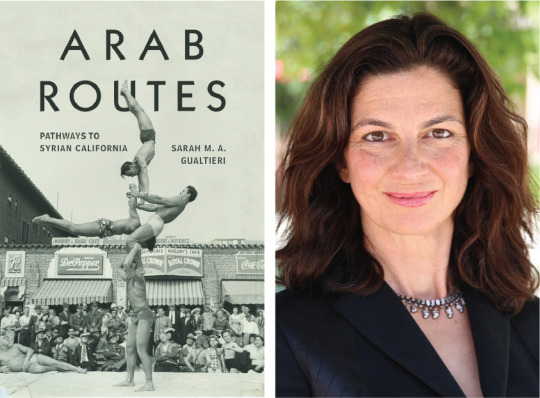
In 2003, when Kathy Saade Kenny, the granddaughter of Palestinian immigrants, stumbled upon a mysterious cache of letters stored in an old See’s candy box tucked away in the back of a closet in her mother’s Los Angeles home, she was intrigued.
As Susan Bell explains, inside the box were more than 130 letters written by her grandmother, Katrina Sa’ade. A successful businesswoman, Sa’ade had migrated to California from Palestine, via Mexico.
Suspecting the letters could provide a treasure trove of information about her family history, Kenny was excited to read them. However, as a third-generation immigrant, she didn’t possess the necessary key to unlock their secrets: The letters were written in Arabic.
Sarah Gualtieri describes this scene in her book Arab Routes: Pathways to Syrian California (Stanford University Press, 2019), which explores how an Arab American community came into being in Southern California. In doing so, Gualtieri, associate professor of American studies and ethnicity, history and Middle East studies at USC Dornsife College of Letters, Arts and Sciences, re-inscribes Arabs into California history.
“Traditionally, California history hasn’t done a very good job of recognizing the deep roots of the Arab community here in the state,” Gualtieri says. “My book also pushes against this idea that circulates very widely in the media that Arabs are new immigrants, and that they are always somehow more Middle Eastern than they are American.”
Enlisting the help of a Palestinian historian and translator, Kenny embarked on a journey to unlock the secrets of her grandmother’s past. The translated letters revealed a complicated divorce case between her grandmother and her then-husband — a case that took her grandmother back and forth to Palestine.
“Kathy comes to understand her grandmother’s journey as a migrant, as a woman who came from Palestine to California through this unfolding mystery that’s revealed through her letters,” Gualtieri says. “Not only does Kathy discover an untold family drama, she starts to understand this whole dimension of her life in a new way. This helps her connect to her sense of Arabness and refine her identity as an Arab American.”
Gualtieri says the Arab American community often works to reconstruct their connection to their Middle Eastern roots. Many of those she interviewed during her research tended to mute their identity as Arab Americans — often, she says, because they came of age in the 1950s and ’60s, when, just as now, there was considerable hostility toward Arab countries.
The Latin American connection
The realization that people’s origins are frequently much more complex than they may appear on the surface is a key theme that runs through Gualtieri’s research. We tend to think of immigration as a unilinear journey, she argues, and don’t pay enough attention to the important role that’s played in shaping immigrants’ identities by the places where they live and spend time along the way.
Since the late 19th century, Syrian and Lebanese migration, in particular, to Southern California has been intimately connected to and through Latin America, and especially Mexico.
“This Latin American dimension of the Arab history in Southern California is not well known, and I wanted to tell that story,” Gualtieri said. “My book looks at what I call ‘other pathways’ to the U.S., and specifically to California, in particular at this southern route that so many Arabic-speaking migrants took to come to L.A.”
Gualtieri’s research goes beyond the Ellis Island stereotypes to uncover the stories of this Syrian American community, one both Arabized and Latinized, revealing important cross-border and multiethnic solidarities in Syrian California.
Sleepy Lagoon murder
Among them, she reveals the Syrian interests in the defense of the Mexican American teens charged in the 1942 Sleepy Lagoon murder.
Twenty-two alleged members of L.A.’s 38th Street Gang were accused of the murder of another Mexican American youth, José Díaz, who had been found unconscious and dying near a Commerce, California, reservoir.
Nicknamed “Sleepy Lagoon,” the reservoir was a popular swimming spot for Mexican Americans denied entrance to segregated pools. Seventeen defendants eventually went to court as the largest mass trial in California history took place in an atmosphere of intense prejudice and racial discrimination.
This scene on the cover of Sarah Gualtieri’s latest book showing acrobats performing at Muscle Beach near Santa Monica, California, is set against the backdrop of a Syrian American cafe.
Gualtieri tells the story of what became an infamous miscarriage of justice through the lens of one of the lead defense lawyers in the case, a Syrian American named George Shibley.
“When we understand this celebrated but difficult trial in California history through the eyes of a Syrian American lawyer, we can see the kinds of solidarities that emerged between Arab Americans and Mexican Americans in Los Angeles at that time,” Gualtieri says. “Rather than telling this story through the lens of conflict, we can shift to understanding it as a fascinating story about solidarity and the potential for interethnic coalition building.”
Different ways to be American
At a period in history when we are facing increased Islamophobia, and increased hostility to immigrants, Gualtieri says she would like people to take away the idea that there are different ways to be American.
“Something that’s always troubled me as a scholar in this field is the way in which Arabs are often seen as being unAmerican. Too often we think of Arabic-speaking migrants and their children as being somehow more connected to the region of origin than they are to the region of settlement,” Gualtieri says.
“This book offers a rich history of how integrated Arabs are into the Southern California fabric.”
The striking cover of Gualtieri’s book is a perfect illustration of this. It shows acrobats performing at the celebrated Muscle Beach in Santa Monica, California, in the 1940s. It’s an iconic Southern California scene and the backdrop is Khoury’s — a Syrian American café.
“I like that idea of thinking about the presence of an Arab cafe owner in such an iconic story of California leisure,” Gualtieri says. “I want readers to obviously be struck by the tumblers, but also to look beyond them and to see another layer — this Syrian American café where people probably went to buy a soda while they watched the acrobatics.”
#world history#uk#usa#usa news#usa politics#palestine#syria#lebanon#middle east#migration#mexico#community#manchester#education#immigration#iraq#london#scotland#hussein al-alak#california#los angeles#books#books and reading
2 notes
·
View notes
Text
My mother, Maria Teresa Creighton de Padilla, attended high school in Los Angeles in 1940. She never told me any of the history of the zoot suit riots, or the framing of those boys of that neighborhood, Sleepy Lagoon, for the youths murder. She was from Mexico. But she told me almost nothing about her experiences in Southern California. Forward to the 1960s through the eighties: I had to learn for myself about the racism in the Midwest against Mexicans & other non-Whites. There still needs to be profound change, corrections to injustices. It feels as if there's still an invisible lower ceiling for Mexicans & Hispanics in the USA. Much of this racism is hidden, implicit, behind closed doors. The personification of this anti-Hispanic racism and bigotry has coalesced to the choices of MAGA extremists for their leaders . I'm a US combat veteran with an honorable discharge; nonetheless I sometimes, when my origins are revealed , I feel I'm not treated with respect in the country of my own birth. I feel tempted to pass for White, to avoid confrontation, to "let it go" & "move on". Move on to where? At my age? Those strategems failed me. Whether you agree with me, gentle readers, whether you empathize, I don't care anymore. I'm an old man now, and my home is in heaven. Adieu, América.
0 notes
Text

This year’s contenders. List after the cut if you want to follow along!
Thrillers
Carrie
Children of the Corn
Ghostwatch
It Follows
VVitch
Sleepy Hollow
Longlegs
Cabin In The Woods
I Saw The TV Glow
Suspiria
Crimson Peak
Thirteen Ghosts
The Lost Boys
Ghost Ship
The Love Witch
Doctor Sleep
Ghost Stories
Housebound
The Conjuring
Colour Out Of Space
Dawn Of The Dead
The Evil Dead
The Exorcist
Haunted Mansion
Season Of The Witch
Talk To Me
Warlock
Wicker Man
Interview With The Devil
Slashers
Halloween
Prom Night
Trick ‘r Treat
Nightmare On Elm Street
Friday the 13th
Heathers
Psycho
Slumber Party Massacre
Scream
Scream 2
Scream 3
Scream 4
Nightmare on Elm Street 2
Candy Man
The Final Girls
Comedy
Beetlejuice
Ghostbusters 2
Ghostbusters: Frozen Empire
Extra Ordinary
Arsenic & Old Lace
The Monster Squad
Saturday The 14th
Seven Stages to Achieving Eternal Bliss
Totally Killer
Vampire Kiss
Once Bitten
So I Married An Axe Murderer
Elvira
Death Becomes Her
Club Dread
Fido
Classics
Nosferatu
Dracula
Bride of Frankenstein
The Phantom Carriage
The Invisible Man
Ghost Breakers
Creature From The Black Lagoon
Abott & Costello Meet …
“ “ Frankenstein
“ “ The Invisible Man
“ “ The Monster Boris Karloff
“ “ The Mummy
“ “ Dr Jekyll & Mr Hyde
Musicals
The Rocky Horror Picture Show
Phantom Of The Paradise
Dead & Breakfast
Little Shop Of Horrors
Heathers: The Musical
Children
Coraline
ParaNorman
Monster House
Hotel Transylvania
Addams Family
Addams Family Values
Over The Garden Wall
Wendell & Wild
Muppet Haunted Mansion
Spiderwick Chronicles
Wallace & Gromit: Curse Of The WereRabbit
The Haunted Mansion
Practical Magic
Missing Link
Scooby Doo and the Witches Ghost
every year I want to watch a bunch of seasonally appropriate movies in the fall and i just end up watching the same things over and over or ending up with choice paralysis scrolling for movies so I wound up just making a giant master list sorted by category so I can choose a genre, close my eyes, and pick! I call it Fall Film Fest.
#halloween movies#halloween#fallfilmfest2024#horror movies#slasher movies#the real horror is making it through October having only watched two scary movies#aka my Halloween last year#some of these are harder to find so yo-ho-ho#some have remakes so choose the version you fancy most#choice paralysis#movie recc
8 notes
·
View notes
Text






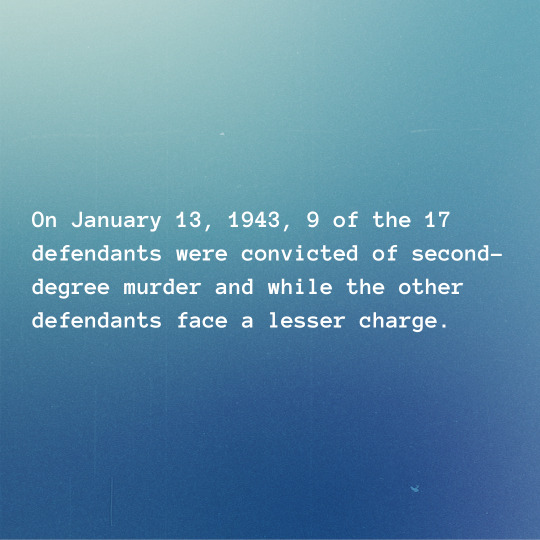

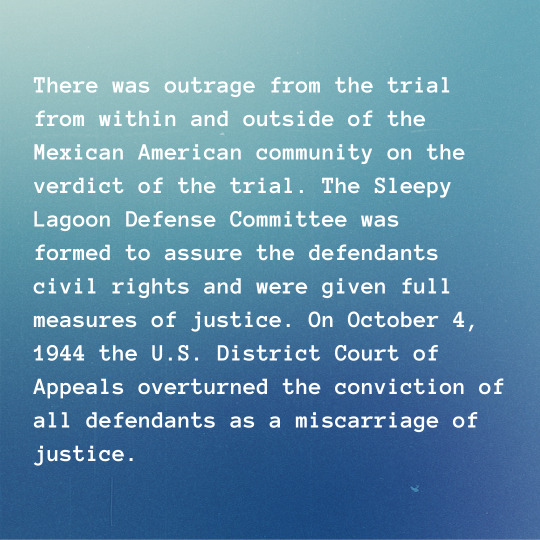

A Counterculture Criminalized.
“The zoot suits represented a spectacular style that was once fashionable yet defiant. Amid patriotic appeals for conformity and austerity, the conspicuous clothing came to signify the second-generation’s dissatisfaction with the poverty and discrimination faced daily by the Mexican community.” - Elizabeth R. Escobedo, “The Pachuca Panic: Sexual and Cultural Battlegrounds in World War II Los Angeles” Western Historical Quarterly 38, No. 2 (2007): 136.
#sleepy lagoon#zoot suits riots#los angeles#california#1942#1943#pachuco#pachuca#culture#zoot suit#riots#world war two#conformity#rebellion#murder#yellow journalism#discrimination#mexican american history#american history#california history#los angeles history#history matters
8 notes
·
View notes
Photo

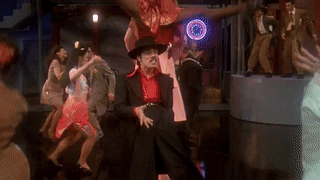


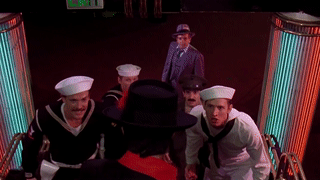

Zoot Suit: on the night before his Navy enlistment, Henry Reyna & his fellow pachucos are framed for a murder at the Sleepy Lagoon. Based on the dynamic Broadway musical, Luis Valdez’ cinematic adaptation covers the real life trial that would become a pivotal piece of the Chicano Movement!
#scenes#musicals#zoot suit#looks#edward james olmos#daniel valdez#lupe ontiveros#tony plana#luis valdez#poc#1980s#1940s
25 notes
·
View notes
Photo
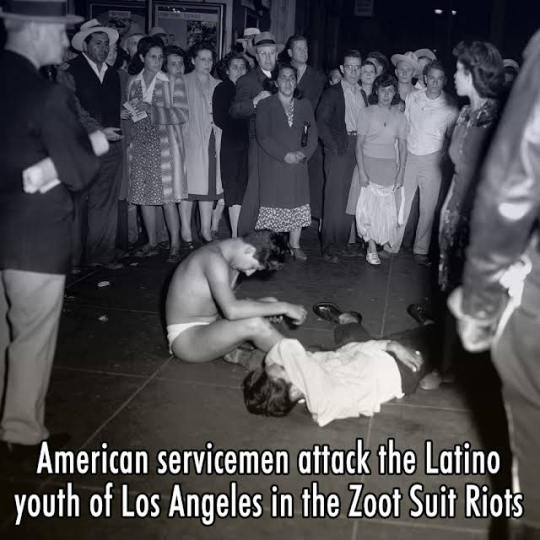
World War Two23 hours ago (edited)
On 3 June 1943, American servicemen open the attack on the Latino youth of Los Angeles in the Zoot Suit Riots. The youth cultures are flourishing in Los Angeles, and the young Latino community is no exception. Expressing a new wave of music and dress, some young men have started wearing so-called 'zoot suits'. Made up of a long wide-shouldered coat, gathered pants, and extravagant chains, the suit is a flamboyant piece and a form of protest against the economic disadvantages they often have.
But now, it's wartime, and that means rationing. Among the rationed goods are suits, which are now to be manufactured with as little wool as possible. Wide cuts such as the zoot suits are therefore also banned from manufacturing and selling. However, the young Latinos continue to wear what they got and sometimes acquire new suits on the black market.
The zoot suits do much to anger the large population of military servicemen in the city, who see them as provoking and unpatriotic. With all eyes already on Los Angeles' young Latino community because of the ongoing Sleepy Lagoon murder trial, a brawl between a group of sailors and zoot suiters is all that's needed to ignite the tension.
The day after the brawl, a mob of servicemen armed with clubs heads for East Los Angeles to pick a fight with any young Latino they can lay their hands on. Journalist Carey McWilliams witnesses: 'Marching through the streets of downtown Los Angeles, a mob of several thousand soldiers, sailors, and civilians, proceeded to beat up every zoot suiter they could find. [...] Streetcars were halted while Mexicans, and some Filipinos and Negroes, were jerked from their seats, pushed into the streets and beaten with a sadistic frenzy.'
The racial violence will continue for several more days, during which the local media will lay the blame for the riots on the young Latinos. The police just stand by and watch or even participate in the riots, arresting some 500 zoot suiters. Photo: Victims of the Zoot Suit Riots, June 1943. Source: Harold P. Matosian, AP
10 notes
·
View notes
Text
scandalous star: anthony quinn - an analysis
“I have lived in a flurry of images, but I will go out in a freeze frame.” - Anthony Quinn
Lusty, earthy, passionate and rugged, Anthony Quinn had lived with his feet planted in two cultures, the Mexican and the Irish, and resisted categorization. True to his lunar sign, Leo, he lived a big and emotionally passionate life; thrice a husband and reportedly 13 times a father, in his own words, he definitely loved the ladies. He rubbed elbows with showbiz luminaries as well as powerful underworld figures such as the mafia. Quinn had a personal relationship with New York City Mafia crime boss Frank Costello and other Genovese gangsters. It was reported that he wanted to play Gambino crime boss Paul Castellano, because he inspired Quinn since Castellano had had a "thirty-year-old" mistress, which Quinn believed was "a beautiful thing". He fought early to go beyond the stereotypes and demand Mexicans and Indigenous Americans be treated with dignity in films. This also extended to the real world; Quinn gained some notoriety for his civil rights work and political stands. After the 1942 “Sleepy Lagoon” trial, in which 22 Mexican youths from East Los Angeles were convicted of murder following a gang killing, Quinn helped to raise funds for an appeal, a move that many considered radical for an actor at that time. Quinn’s dual heritage had a profound effect on his sense of identity, which was displayed both in his decision to become an actor and in the various ethnic roles he played. In his lengthy career, he was very versatile and played a pantheon of nationalities, ranging from Mexican to Greek, Italian, Asian, and so on. Nonetheless, he self0identified as a Latino and as one of the first and most notable Latinos in Hollywood, he is a film legend, and he holds the distinction of being the first Mexican-American to win an Academy Award.

Anthony Quinn, according to astrotheme, was a Taurus sun and Leo moon. Quinn was born Manuel Antonio Rodolfo Quinn Oaxaca in Chihuahua, Mexico to an Irish immigrant father and a Mexican mother. Both of his parents fought in the Mexican Revolution with Pancho Villa. Fearing for his life from federal troops, Quinn’s father Frank escaped to the United States. His mother Manuella, carrying the infant Anthony in her arms, soon followed. After first living in El Paso, Texas, Frank moved his family to California, where they traveled up and down the San Joaquin and Napa valleys picking fruit. Quinn worked alongside his parents at age 4 and 5, earning 10 cents an hour. His father was killed in an automobile accident when Quinn was 9. As a young man, Quinn boxed professionally to earn money; enjoying a very brief career that included 16 consecutive victories, but hung up his gloves after he was knocked out in his 17th fight, deciding he lacked the “killer instinct.” He then studied art and architecture under his friend Frank Lloyd Wright at the designer's Arizona residence. Largely self-educated, as a young man he embarked on a self-improvement program in which he read a book, listened to a new symphony and familiarized himself with a different artwork each week. Quinn also dabbled in music, taking up the saxophone and forming a small orchestra that played for Los Angeles area dances. The music led him to the Foursquare Gospel Church of Pentecostal evangelical preacher Aimee Semple McPherson, and he joined a band with Angelus Temple in Echo Park. He even preached a bit.
Quinn made his acting debut in 1936 in Mae West’s play “Clean Beds,” imitating John Barrymore, for whom the role was originally written. On opening night in Los Angeles, Barrymore himself came to see the play, throwing the cast and director into a panic. After the show, Barrymore came backstage in search of the young man who had portrayed him. He glowered at Quinn, and said, “You were marvelous out there.” Learning that Quinn was only 21, Barrymore invited him to visit and became a friend and mentor. After a short time performing on the stage, Quinn launched his film career performing uncredited character roles, often playing "ethnic" villains in Paramount films such as The Plainsman, and played a more sympathetic Crazy Horse in They Died with Their Boots On with Errol Flynn. Quinn said he deceived director Cecil B. de Mille into thinking he was Cheyenne to get the part, even speaking gibberish that passed for the Cheyenne dialect. In 1937, Quinn married de Mille’s adopted daughter, Katherine, whom he met on the set of “Plainsman.” Quinn and de Mille had five children. Their first son, Christopher, drowned in 1941 as a toddler when he wandered onto the estate of W.C. Fields in Los Feliz—down the street from the Quinn residence—and fell into the fish pond. He spent the next 20 years numb and in guilt from his son’s death. His career breakthrough occurred when he played a matador in the 1941 bullfighting-themed film Blood and Sand with Tyrone Power and Rita Hayworth. Quinn and de Mille divorced in 1965 when it was revealed that Quinn had a child by wardrobe designer Jolanda Addolori, whom he married soon after. Quinn appeared in numerous films between 1936 and 1947, usually in bit parts and none of them noteworthy.
His breakthrough role—as well as his first Oscar for Best Supporting Actor—came in Viva Zapata! playing opposite Marlon Brando as the older brother of the great Mexican revolutionary, Emiliano Zapata. He also portrayed the artist Gauguin in “Lust for Life,” earning his second Best Supporting Actor Oscar. The performance Quinn is most associated with, however, came in 1964 as Alexis Zorba, the Greek peasant in Zorba the Greek. Nearly 20 years later, he reprised the role on Broadway, eventually taking the show on a three-year U.S. tour that included more than 1,200 performances and grossed more than $48 million, making it one of the most lucrative revivals in theater history. Quinn’s last years were devoted more to his art than to his acting. As far as his lusty personal life, he loved women: he had well-known dalliances with such actresses as Carole Lombard, Rita Hayworth, Ingrid Bergman and her daughter Pia Lindstrom, among others. Quinn also seemed to have a habit of having kids with and/or marrying his mistresses: In the 1970s, during his marriage to Addolori, Quinn also had two children with Friedel Dunbar, an event producer in Los Angeles. By the 1990s, Quinn then had two children with his secretary, Katherine Benvin. His marriage with Addolori finally ended in divorce in August 1997. He then married Benvin a few months later and remained married to her until his death from lung cancer at 86.
Next, I’ll talk about one of my top 5 favourite actresses of all-time, a superb actress who commanded the screen, a scrappy fighter of a woman who was as tough as nails and no-nonsense in her films as she was in real life: Cancer Barbara Stanwyck.

STATS
birthdate: April 21, 1915
major planets:
Sun: Taurus
Moon: Leo
Rising: Cancer
Mercury: Aries
Venus: Pisces
Mars: Aries
Midheaven: Aries
Jupiter: Pisces
Saturn: Gemini
Uranus: Aquarius
Neptune: Cancer
Pluto: Cancer
Overall personality snapshot: He had what could be called a substantial personality – the kind that built empires and ran them for a hobby. Although he tended to be conventional in values, he was nevertheless quite outspoken and flamboyant in expression, and he left no one in doubt about where he stood, at least on the issues that seemed worthy of his attention. He was one of the combinations that rarely suffered from an inferiority complex, and as a result he could do almost anything to which he set his mind. He did his homework too, and was secure in what he knew. With fixed ideas about how to get things done, he definitely did things his way because he wanted the best and the longest-lasting result. He made a good executive or leader of some sort because he had amazing powers of concentration which took him through to the end. And he was not afraid to call a spade a spade and to stick to his guns on principle. No wavering or dilly-dallying for him. Even in the most humble of positions, he brought a dedication and nobility to his work that made others admire and respect him.
There was a quiet introvert within him, which was happy to plod along in comfortable grooves as long as his security and plans for greater security remained intact. At one level, his needs were straightforward – he valued the solid, sensible and sensual things of this world and he wanted a steady supply of them as well. On the other hand, however, a simple, quiet life is just not quite enough. The darkest side of him could be a bit like the fisherman’s wife who always wanted more – her grandiose fantasies keep mushrooming until finally it is God she wants to be! The need for tangible proof of his specialness, greatness and loveableness made him a bit like her, and his pride can get out of hand. If he found life was getting a little boring, he was likely to do something a bit risky. Sticking his elegant neck out, he discovered that he had a real ham inside him that loved to sing, dance, and entertain. And what fun he had doing it! In other words, besides the introvert he also had a daredevil extrovert inside him that wanted to throw caution to the wind and go on wild spending sprees. That side of him was also very sociable and he could be a courteous, classy host when he chose to entertain. The people he invited to his home – which is where he liked to do his socializing – will be individuals and friends he truly valued.
His face had beautiful round, sensitive eyes that showed concern and innocence. His whole appearance spoke of softness and tenderness. He may have felt overwhelmed at times by the depth of emotion that he felt. It was very healthy for him to play the mothering role, whether to a group of people, in the context of a business, or by nurturing a strongly felt cause. He was quick-witted, decisive and competitive. He liked to make an impression, and be seen as making an impression. His enthusiasm for something that interested him was astounding. He could be quite impatient and unrealistic, especially when she faced opposition and obstacles. He was also self-willed and confident. In arguments, he could be quite combative, believing that he was right. He tended to have a hot temper that needed a firm hand. Sometimes he could be a little thoughtless and quarrelsome. He and honesty went hand in hand. He had an artistic side to him that obviously influenced him choice of career as a musician. Once he had decided upon his career, he was able to (and most certainly did) pursue it with great determination. He could be, at times, unreliable, extravagant and self-indulgent. He had problems defining his objectives and accepting responsibilities. However, once he found a goal to work towards, the sky was the limit considering the vast resources that he had at his disposal. He needed a career where he was in charge. Being trapped behind a desk was not the way to go, because his high level of physical energy needed a release. Challenge was very important to him in his career, as well as recognition of having done something worthy of attention. He wanted to be seen as powerful, strong, assertive and ambitious.
His attitudes and ideas tended to be on the conservative side, but they were profound and he was able to constructively develop and apply them. He was very serious about everything that gained his attention, although high nervous tension plunged him into periods of depression. At times, he could lack emotional warmth, preferring his life to be ordered and disciplined. When things didn’t go his way, he could fall into a bout of depression or feel very bitter and vindictive. His sense of humour tended to be rather black and low-key. He belonged to a generation in which humanitarian ideals became extremely important, as well as the belief in absolute freedom for every individual. As a member of this generation, he came up with radical new ideas which he stubbornly followed. Knowledge was acknowledged as bringing freedom. As a member of this generation, he felt deep spiritual convictions, although he may not have seen himself as religious in the traditional sense of the word. He was part of an emotionally sensitive generation that was extremely conscious of the domestic environment and the atmosphere surrounding their home place and home country. In fact, he could be quite nostalgic about his homeland, religion and traditions, often seeing them in a romantic light. He felt a degree of escapism from everyday reality, and was very sensitive to the moods of those around her. Anthony Quinn embodied all of these Cancer Neptunian ideals. Changes were also experienced in the relationships between parents and children, with the ties becoming looser. Was part of a generation known for its devastating social upheavals concerning home and family. The whole general pattern of family life experienced enormous changes and upheavals; as a Cancer Plutonian, this aspect is highlighted with Quinn’s son dying prematurely in a childhood accident and his subsequent guilt and mental blocking of it afterwards; it was only 40 years later that he was only able to uncover this grief and finally come to grips with his son’s death while in character playing the titular character of Zorba the Greek on Broadway. Zorba also lost a son, and refers to him twice in the course of the show. Quinn, like Zorba, left his family because he couldn’t bear being with them after the loss of his son.
Love/sex life: He was the most romantic, volatile, and alluring of all the Mars in Aries lovers. He combined enormous erotic vitality with a real emotional need for human contact. Unfortunately, this emotional openness also made him one of the most vulnerable lovers of this type. The reckless abandon that characterized his approach to sex invariably brought him pain and sorrow. It would all be so much easier if he could exercise a little caution in his love life, but what would be the fun in that? Because of his emotionally vulnerable nature, his attitude toward sex and love changed a great deal as he aged. His sexual energy in his youth was so irresistible and his optimism so strong that he rushed into relationships. After he’d been bumped and bruised a few times, he became more cautious and more aware of the psychic scars that love could leave. It was only natural that, later in life, he would be wary of his passions and maybe even a little vindictive but he needed to be mindful not to make the people who loved him in the present suffer for the mistakes of those who failed him in the past.
minor asteroids and points:
North Node: Aquarius
Lilith: Gemini
Vertex: Sagittarius
Fortune: Scorpio
East Point: Cancer
Her North Node in Aquarius dictated that he needed to try not to let himself fall in the trap of overemphasizing his own importance. He needed to be able to share with others more readily and to be prepared to see issues from their perspective. His Lilith in Gemini ensured that he was dangerously attracted to women with a kaleidoscopic psyche who were wily, witty, and able to best anyone in a debate and weren’t above flirting, cajoling, wiring, and talking their way to the top. His Part of Fortune in Scorpio and Part of Spirit in Taurus dictated that his destiny lay in cultivating ambition and power as he fearlessly delved into the unknown. He attempted to use his power wisely. His joy was found by stripping away the outer layers of experiences and getting to the core. No plan or plot was too complex to use in his pursuit of happiness and success. His soul’s purpose asked him to create and comfort for himself and those around him. He felt spiritual connections and the spark of the divine in the tangible things around him—what he could taste, touch, smell, see and hear. East Point in Cancer dictated that the identification was more with the unconditional love parent (his mother). However, parental role models can be positive or negative. In his case, it was positive and it resulted in his social consciousness. His Vertex in Sagittarius, 5th house dictated he dreamed of the pinnacle of adventure when it came to mating. The yearning was strong and really deep when it came to rarefied experiences of any sort. Creative partners, lovers, givers of enjoyment, playmates who share hobbies or other recreational interests had an unhealthily high appeal for Quinn.
elemental dominance:
water
fire
He had high sensitivity and elevation through feelings. His heart and his emotions were his driving forces, and he couldn’t do anything on earth if he didn’t feel a strong effective charge. He needed to love in order to understand, and to feel in order to take action, which caused a certain vulnerability which he should (and often did) fight against. He was dynamic and passionate, with strong leadership ability. He generated enormous warmth and vibrancy. He was exciting to be around, because he was genuinely enthusiastic and usually friendly. However, he could either be harnessed into helpful energy or flame up and cause destruction. Ultimately, he chose the former. Confident and opinionated, he was fond of declarative statements such as “I will do this” or “It’s this way.” When out of control—usually because he was bored, or hadn’t been acknowledged—he was bossy, demanding, and even tyrannical. But at his best, his confidence and vision inspired others to conquer new territory in the world, in society, and in themselves.
modality dominance:
cardinal
He was happiest when he was doing anything new, and he loved to begin new ventures. He enjoyed the challenge of claiming territory. He tended to be an initiator—and a bit territorial as well. Also, he had a tendency to start more things than he could possibly finish.
house dominants:
9th
1st
10th
Traveling, whether physically across the globe, on a mental plane or expanding through study was a major theme in his life. He was not only concerned with learning facts, but also wanted to understand the connections formed between them and the philosophies and concepts they stand for. His conscience, as well as foreign travel, people and places was also of paramount importance in his life, as is evidenced in his appeal and greater opportunities for more meaningful work outside of America. His personality, disposition and temperament is highlighted in his life. The manner in which he expressed herself and the way he approached other people is also highlighted. The way he approached new situations and circumstances contributed to show how he set about his life’s goals. The general state of his health is also shown, as well as his early childhood experiences defining the rest of his life. His ambition in relation to the outside world, the identity he wished to achieve in regard to the community at large, and his career aspirations were all themes that were emphasized throughout his life. All matters outside the home, his public image and reputation were very important to him. His attitude to people in authority, and how he viewed the outside world, as well as the influence of his mother and his own attitude to her was highlighted.
planet dominants:
Neptune
Mars
Moon
He was of a contemplative nature, particularly receptive to ambiances, places, and people. He gladly cultivated the art of letting go, and allowed the natural unfolding of events to construct his world. He followed his inspirations, for better or for worse. He was aggressive, individualistic and had a high sexual drive. He believed in action and took action. His survival instinct was strong. He wanted to take himself to the limit—and then surpass that limit, which he often did. He ultimately refused to compromise his integrity by following another’s agenda. He didn’t compare herself to other people and didn’t want to dominate or be dominated. He simply wanted to be free to follow his own path, whatever it was. He was defined by his inner world; by his emotional reactions to situations, how emotions flowed through him, motivating and compelling him—or limiting him and holding him back. He held great capacity to become a part of the whole rather than attempting to master the parts. He wanted to become whatever it is that he sought.
sign dominants:
Aries
Cancer
Pisces
He was bold, courageous, and resourceful. He always seemed to know what he believed, what she wanted from life, and where he was going. He could be dynamic and aggressive (sometimes, to a fault) in pursuing his goals—whatever they might be. Could be argumentative, lacked tact, and had a bad temper. On the other hand, his anger rarely lasted long, and he could be warm and loving with those he cared about. At first meeting, he seemed enigmatic, elusive. He needed roots, a place or even a state of mind that he could call his own. He needed a safe harbor, a refuge in which to retreat for solitude. He was generally gentle and kind, unless he was hurt. Then he could become vindictive and sharp-spoken. He was affectionate, passionate, and even possessive at times. He was intuitive and was perhaps even psychic. Experience flowed through him emotionally. He was often moody and always changeable; his interests and social circles shifted constantly. He was emotion distilled into its purest form. He needed to explore his world through his emotions. He felt things so deeply that quite often he became a kind of psychic sponge, absorbing the emotions of people around him. As such, he gravitated toward the arts, in general, to theater and film specifically. He could be ambivalent and indecisive simply because he was so impressionable. He also tended to be moody because he felt the very height of joy and the utter depths of despair. Love and romance were essential for him. These fulfilled him emotionally, and he generally flourished within stable relationships.
Read more about him under the cut.
Anthony Quinn was born Antonio Rodolfo Quinn Oaxaca (some sources indicate Manuel Antonio Rodolfo Quinn Oaxaca) on April 21, 1915, in Chihuahua, Mexico, to Manuela (Oaxaca) and Francisco Quinn, who became an assistant cameraman at a Los Angeles (CA) film studio. His paternal grandfather was Irish, and the rest of his family was Mexican. After starting life in extremely modest circumstances in Mexico, his family moved to Los Angeles, where he grew up in the Boyle Heights and Echo Park neighborhoods. He played in the band of evangelist Aimee Semple McPherson as a youth and as a deputy preacher. He attended Polytechnic High School and later Belmont High, but eventually dropped out. The young Quinn boxed (which stood him in good stead as a stage actor, when he played Stanley Kowalski in "A Streetcar Named Desire" to rave reviews in Chicago), then later studied architecture under Frank Lloyd Wright at the great architect's studio, Taliesin, in Arizona. Quinn was close to Wright, who encouraged him when he decided to give acting a try. Made his credited film debut in Parole! (1936). After a brief apprenticeship on stage, Quinn hit Hollywood in 1936 and picked up a variety of small roles in several films at Paramount, including an Indian warrior in The Plainsman (1936), which was directed by the man who later became his father-in-law, Cecil B. DeMille. As a contract player at Paramount, Quinn's roles were mainly ethnic types, such as an Arab chieftain in the Bing Crosby-Bob Hope comedy, Road to Morocco (1942). As a Mexican national (he did not become an American citizen until 1947), he was exempt from the draft. With many other actors in military service during WWII, he was able to move up into better supporting roles. He married DeMille's daughter Katherine DeMille, which afforded him entrance to the top circles of Hollywood society. He became disenchanted with his career and did not renew his Paramount contract despite the advice of others, including his father-in-law, with whom he did not get along (whom Quinn reportedly felt had never accepted him due to his Mexican roots; the two men were also on opposite ends of the political spectrum) but they eventually were able to develop a civil relationship. Quinn returned to the stage to hone his craft. His portrayal of Stanley Kowalski in "A Streetcar Named Desire" in Chicago and on Broadway (where he replaced the legendary Marlon Brando, who is forever associated with the role) made his reputation and boosted his film career when he returned to the movies. Brando and Elia Kazan, who directed "Streetcar" on Broadway and on film (A Streetcar Named Desire (1951)), were crucial to Quinn's future success. Kazan, knowing the two were potential rivals due to their acclaimed portrayals of Kowalski, cast Quinn as Brando's brother in his biographical film of Mexican revolutionary Emiliano Zapata, Viva Zapata! (1952). Quinn won the Best Supporting Actor Academy Award for 1952, making him the first Mexican-American to win an Oscar. It was not to be his lone appearance in the winner's circle: he won his second Supporting Actor Oscar in 1957 for his portrayal of Paul Gauguin in Vincente Minnelli's biographical film of Vincent van Gogh, Lust for Life (1956), opposite Kirk Douglas. Over the next decade Quinn lived in Italy and became a major figure in world cinema, as many studios shot films in Italy to take advantage of the lower costs ("runaway production" had battered the industry since its beginnings in the New York/New Jersey area in the 1910s). He appeared in several Italian films, giving one of his greatest performances as the circus strongman who brutalizes the sweet soul played by Giulietta Masina in her husband Federico Fellini's masterpiece La Strada (1954). He met his second wife, Jolanda Addolori, a wardrobe assistant, while he was in Rome filming Barabbas (1961). Alternating between Europe and Hollywood, Quinn built his reputation and entered the front rank of character actors and character leads. He received his third Oscar nomination (and first for Best Actor) for George Cukor's Wild Is the Wind (1957). He played a Greek resistance fighter against the Nazi occupation in the monster hit The Guns of Navarone (1961) and received kudos for his portrayal of a once-great boxer on his way down in Rod Serling's Requiem for a Heavyweight (1962). He went back to playing ethnic roles, such as an Arab warlord in David Lean's masterpiece Lawrence of Arabia (1962), and he played the eponymous lead in the "sword-and-sandal" blockbuster Barabbas (1961). Two years later, he reached the zenith of his career, playing Zorba the Greek in the film of the same name (a.k.a. Zorba the Greek (1964)), which brought him his fourth, and last, Oscar nomination as Best Actor. The 1960s were kind to him: he played character leads in such major films as The Shoes of the Fisherman (1968) and The Secret of Santa Vittoria (1969). However, his appearance in the title role in the film adaptation of John Fowles' novel, The Magus (1968), did nothing to save the film, which was one of that decade's notorious turkeys. In the 1960s, Quinn told Life magazine that he would fight against typecasting. Unfortunately, the following decade saw him slip back into playing ethnic types again, in such critical bombs as The Greek Tycoon (1978). He starred as the Hispanic mayor of a southwestern city on the short-lived television series The Man and the City (1971), but his career lost its momentum during the 1970s. Aside from playing a thinly disguised Aristotle Onassis in the cinematic roman-a-clef The Greek Tycoon (1978), his other major roles of the decade were as Hamza in the controversial The Message (1976) (a.k.a. "Mohammad, Messenger of God"); as the Italian patriarch in The Inheritance (1976); yet another Arab in Caravans (1978); and as a Mexican patriarch in The Children of Sanchez (1978). In 1983, he reprised his most famous role, Zorba the Greek, on Broadway in the revival of the musical "Zorba" for 362 performances (opposite Lila Kedrova, who had also appeared in the film, and won an Oscar for Best Supporting Actress for her performance). His career slowed during the 1990s but he continued to work steadily in films and television, including an appearance with frequent film co-star Maureen O'Hara in Only the Lonely (1991). Quinn lived out the latter years of his life in Bristol, Rhode Island, where he spent most of his time painting and sculpting. Beginning in 1982, he held numerous major exhibitions in cities such as Vienna, Paris, and Seoul. He died in a hospital in Boston at age 86 from pneumonia and respiratory failure linked to his battle with throat cancer. (x)
5 notes
·
View notes
Photo










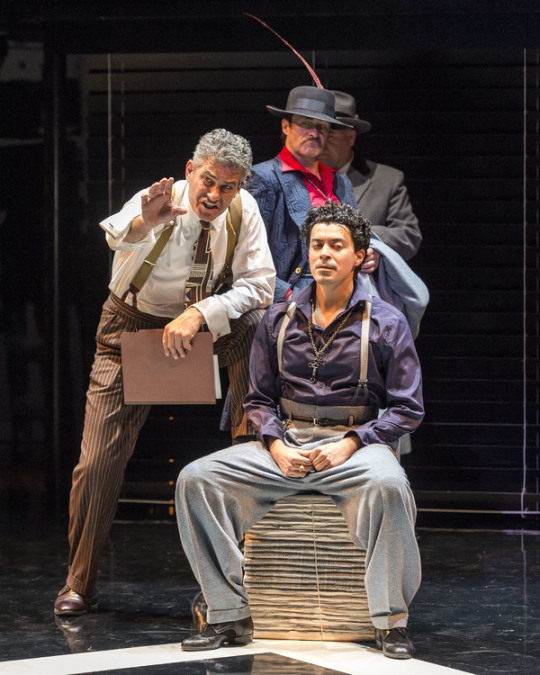
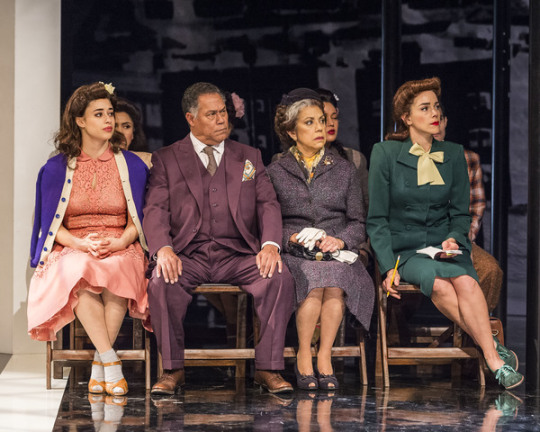
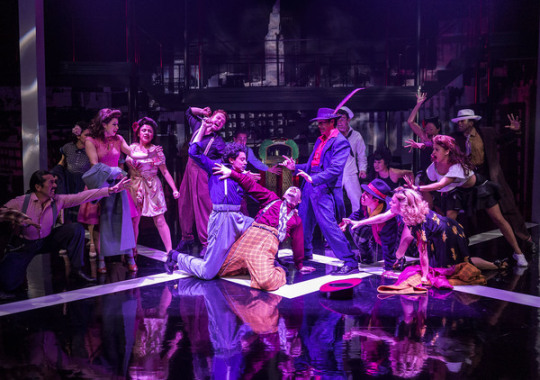


“Zoot Suit” by Luis Valdez
Mark Taper Forum, 2017
Starring Brian Abraham, Mariela Arteaga, Demian Bichir, Melinna Bobadilla, Oscar Camacho, Stephani Candelaria, Raul Cardona, Fiona Cheung, Tiffany Dupont, Caleb Foote, Holly Hyman, Kimberlee Kidd, Rocío López, Jeanine Mason, Tom G. McMahon, Andres Ortiz, Michael Naydoe Pinedo, Matias Ponce, Rose Portillo, Gilbert Saldivar, Richard Steinmetz, Evan Strand, Bradford Tatum, Raphael Thomas & Daniel Valdez
#theatre#theater#american theatre#la theatre#los angeles theatre#hispanic theatre#latin theatre#luis valdez#zoot suit#el teatro campesino#lalo guerrero#matias ponce#jeanine mason#demian bichir#maria torres#daniel valdez#mexican american theatre#pachuco#pachucos#1942 sleepy lagoon murder#center theatre group#chicano plays#chicano theatre
640 notes
·
View notes
Text
Francisca Flores

Chicana Hero
“It is the Mexican-American who possesses the ability to enjoy life to its fullest and to find humor in the most trying situations…The Mexican-American has a glorious past and an unlimited, bright and wonderful future. As for self-definition, we can rightfully say that we are that ethnic minority that transcends and rises above all others. We are that ethnic minority that helped to build a strong America and who continue to strengthen and influence the American society on every front.” FRANCISCA FLORES
Suffering with tuberculosis her whole life, this didn’t stop Francisca from standing up for what is right. Fransica was a fearless Mexican woman. Having to be in sanatorium for her illness, that’s where she met female veterans of the Mexican revolution. With the help of the veterans, she formed the group “Hermana's de la Revolucion” and “Comision Femenil Mexicana Nacional” which was a group of women that talked politics and activism. Flores organized a strike for nurses who were not getting paid enough. This is where her first steps into activism start. This also began her being watched by the government. Flores saw that the Chicano movement was failing in incorporating the Chicanas in the movement. That’s why she worked so hard to organize and create organizations specifically for Chicanas. She wanted them to succeed.
Flores faced cultural sexism just like a lot of other Chicana leaders did. This led her to become a feminist and organize groups.
She co-founded the Mexican American Political Association, and founded the Chicana Service Action Center (helped provide job training and opportunities to at risk Chicanas)
Founded the Comision Feminil Mexicana (train a new generation of Chicana leaders and promote community programs to help the Chicana community)
Here are other amazing activism work she has done
She joined the sleepy lagoon defense committee, which was a committee of activists, lawyers, writers, and other citizens protesting and dedicating their work to freeing 12 Mexican American young men who had been falsely convicted of murder of Jose Gallardo Diaz. She played a key role in helping to free these men by being her own investigator. She conducted interviews with those around her and then started writing and editing in Mexican newspapers.
The film “Salt of earth” was banned in America. This film was about the Mexican miners and the struggles they were facing. The film was destroyed and even the lead actress was deported. Flores saw this injustice and luckily, she had owned a copy. She used that copy and would show it at benefit screenings to provide funding for the filmmakers and the actors legal defense funds
Started a newsletter called “Carta” which later on when into the magazine “Regeneracion”(support youthful Chicano rights movements like the East L.A walkouts) Her work in Rengeracion was out in the exhibit Vincent Art Museum
Even older, she was a member of the Chicano press association
Served on the U.S Civil Rights commission
Marched for the equal rights amendment in Washington D.C in 1980
Went to the United Nations conference on women in Copenhagen
“Women must learn to say what they think and feel and be free to state it without apologizing or prefacing every statement to reassure men they are not competing with them,” Francisca Flores 1971
1 note
·
View note
Text



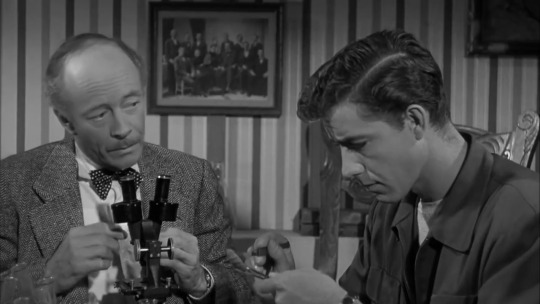
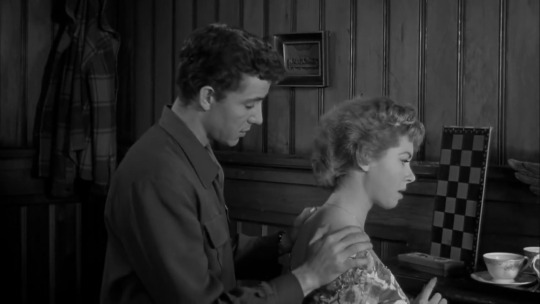
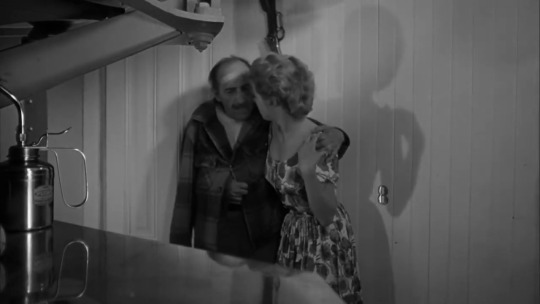


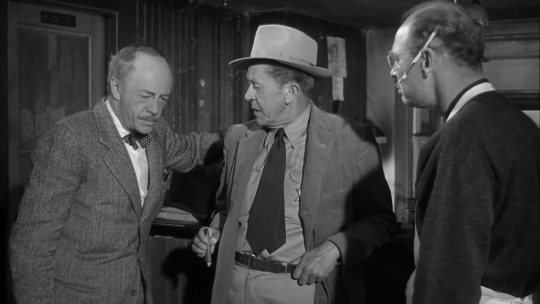
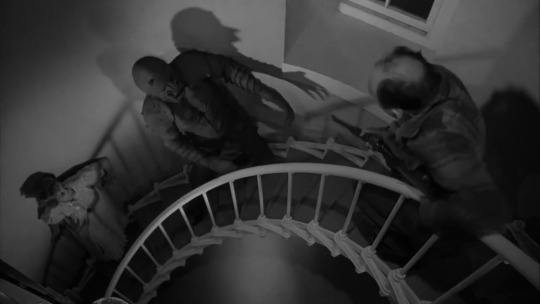
The Monster of Piedras Blancas (1959)
Film review #489
Director: Irvin Berwick
SYNOPSIS: The quiet Californian town of Piedras Blancas hides a dark secret: in the caves beneath the lighthouse, there hides an ancient monster that starts killing the residents of this sleepy town. Unaware of the monster's existence, a number of the residents try to find out what is causing the killings...
THOUGHTS/ANALYSIS: The Monster of Piedras Blancas is a 1959 sci-fi horror film. Set in the small lighthouse town of Piedras Blancas in Southern California, the residents of the town find themselves being killed off one by one, with no idea who...or what is doing it. The film is paced like a typical monster movie of the time, with very little momentum at the beginning, and various murders until the monster's reveal. The pacing is very slow in this one, and we only get the reveal of the monster about two-thirds of the way in, and everything before just involves these cast of characters that do little to distinguish themselves. The dialogue is pretty dull, and the character development doesn't help make things exciting. I suppose this dullness reflects the setting of this sleepy seaside town, but it doesn't really make for an interesting movie.
The film is an independent production, so it doesn't have the backing of the big studios, but then again, those same studios were cranking out films like this at about the same quality, and the same runtime just over an hour long (this runtime was typically suitable for being shown at drive-in cinemas as part of double features, that were popular at the time). As such, it's rather indistinguishable from a more 'mainstream' production. The on-location shots of the cliffs and the town do give it a more authentic feel instead of just relying on sets, so it does have that going for it. The cast of characters can easily be remembered by their roles, and their names are somewhat irrelevant: you have the doctor, sheriff, storekeeper, lighthouse keeper and the young couple. Each of them, as mentioned, fills out a fairly predictable role, and adds very little to proceedings. The young woman manages to show a lot of skin fairly regularly (even going swimming in the sea naked at one point), which would have been a little risqué at the time, and not something I'm sure a bigger production could have gotten away with.
The most notable aspect of this film is definitely the monster itself. Very similar in design to "The creature from the black lagoon," (and designed by the same creator), the monster is based on a diplovertebron, which was a prehistoric creature that lived over three hundred million years ago. We don't get too many shots of the creature in it's full glory, but when we do it looks fairly decent for the time, with a scaly skin and water oozing out of its mouth. One of the other most memorable aspects of the film is the use of gore. In most Hollywood films, the killings would be done offscreen or without any blood or viscerality. When we get the full reveal of the monster, he is carrying the bloody decapitated head of his latest victim, which certainly comes as a shock, since nothing else has happened in the film up to that point, and also you just don't expect to see that kind of gore in these films; also, the effect looks pretty convincing too. We get another shot later on of the abandoned head being walked over by a crab which is also has the same effect, but apart from that, there's not too much to say about this film. The Monster of Piedras Blancas is a fairly forgettable film save for one or two moments that show off its horror credentials. It's fairly short runtime means you can probably check it out without too much fuss though.
5 notes
·
View notes
Text

Edward James Olmos was born on February 24, 1947 in East Los Angeles, California. His ethnically diverse neighborhood – which he refers to as a “salad bowl” because each culture kept its own unique qualities, blending into a whole without losing its individual flavor – contributed towards his open-mindedness and ability to welcome diversity among people.
About the Boyle Heights section of Los Angeles where EJO grew up, he says, “On our small lane (Cheesbrough’s Lane) we had a Hispanic family with thirteen kids, Native Americans, Koreans, Chinese, Mexicans, and Russians. It was a fantastic environment.”
Eddie’s mother, Eleanor Huizar, met his father, Pedro Olmos, while visiting Mexico City. They married and raised three children: Peter, Edward, and Esperanza. His parents divorced when he was seven, and Eddie found refuge in baseball as a means of staying away from street gangs and drugs. He was such a talented ball player; he became the Golden State batting champion.
Early in his teen years, Eddie found a new love – music. He taught himself to sing and play piano, and by 1961 he was good enough to join a band, the Pacific Ocean. The band’s name was Eddie’s idea because it was “the biggest thing on the West Coast.” With waist long hair, Eddie was the band’s lead vocalist. “I was a terrible singer, but, boy, could I scream and dance!”
In 1968 Eddie’s band, Pacific Ocean, made one record, “Purgatory.” It includes such classic tunes as:”Tracks of My Tears,” “Subterranean Homesick Blues,” and “16 Tons.” On the album, credit is given to ‘Eddie James’ as one of the musical arrangers. Eddie also was the groups’ lead singer.
In the mid 1960s Eddie attended East Los Angeles College and California State University by day and played in local clubs most of the night. He began taking acting classes to improve the show. “I started acting to become a better singer. Then the whole thing switched on me. I discovered that the spoken word is easier to project than the sung word.”
One night a young woman walked into Gazzarri’s night club when the band was playing. The daughter of actor Howard Keel, Kaija was to become Eddie’s first wife. They were married in 1971 and had two sons, Mico and Bodie. Edward also has two adopted sons, Michael and Brandon, and two adopted daughters.
To support his family, EJO took jobs delivering antique furniture between gigs and small acting roles. Then in 1978 during an audition for another play, he was asked if he would like to try out for Zoot Suit, a musical drama about the famous 1942 “Sleepy Lagoon” case in which a group of Hispanic youths were wrongly convicted of murder.
Eddie dazzled them at the audition, speaking the part of the narrator in calo, a street jive dialect (a mix of English, Spanish, and Gypsy) from East L.A. He earned the role of El Pachuco, the strutting, posing, super macho narrator.
Zoot Suit opened in 1978 at the Mark Taper theatre with an expected run of ten days. It ran for a year before going to Broadway. By the time the show closed, Eddie had won a Los Angeles Drama Critics Circle award, a Theatre World Award, and was nominated for a Tony Award.
Acting roles came in faster after that. In 1981 he made Wolfen with Albert Finney, and in 1982 he accepted the role of Gaff in Blade Runner with Harrison Ford. In 1984, after difficult negotiations in which he gained the right of creative control over his character of Lieutenant Martin Castillo, Eddie joined the cast of the very popular “Miami Vice.”
His popularity and fame grew tremendously with “Miami Vice.” However, Eddie was able to maintain a balanced approach. “You have to be able to say “no” to fame and fortune before you receive it to be able to say “no” again when you get older,” Olmos observes. “If not, you won’t have the strength and courage to do it. The intent must be pure.” This again became evident with his TV series, “American Family” and more recently with his hit series “Battlestar Galactica.”
"Battlestar Galactica" enjoyed four seasons of rave reviews and became one of the most honored science fiction shows of all time winning the Peabody Award and several Emmys. EJO played the lead character of Admiral Adama, the heart and soul of the show and of the series. He directed several episodes of "Battlestar Galactica" and, most recently, a "BSG" movie titled The Plan which was recently released on DVD and BlueRay and which is set to air on the SyFy Channel in 2010.
Eddie was most recently seen in the role of Michael Axford on the new movie The Green Hornet. His character is an ex-cop turned rough and tough journalist who reports on the Green Hornet and seeks to reveal his identity. And as the murderous zealot on HBO’s hit show Dexter.
#battlestar galactica#news#news updates#scifi#syfy#entertainment#tv#Blade Runner#miami vice#selina gomez#Abraham Quintellina#Admiral Adama
2 notes
·
View notes